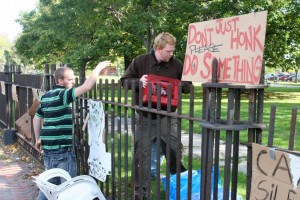Before I start writing about the present condition of public housing and ways of its improvement in the future, I’d like to go over the history of public housing system in the Unites States.
US Public Housing system was created as part of the New Deal, Franklin Delano Roosevelt’s economic recovery plan carried out between 1933 and 1936 in an attempt to restart the US economy after the disastrous effects of the Great Depression. The National Housing Act of 1934, also known as the Capehart Act, led to the creation of the Federal Housing Administration which sets standards for construction and underwriting and insures loans made by banks and other private lenders for home building. The National Housing Act gave people an opportunity of a fresh start by providing affordable housing as they tried to escape poverty brought around by the economic recession.
The purpose of the housing bill was to provide low-cost housing for struggling citizens; however, as some people got richer than others, they started moving away from the neighborhoods associated with poverty and dirt. At about the same time banks realized that they could make money off urban migration and this brings us to 1960s.
Gentrification, one of the most important events in the history of urban studies, started in 1960s, the term itself was coined in 1964 by British sociologist Ruth Glass to describe the process of poorer residents being displaced by wealthier newcomers. Urban migration based exclusively on economic status resulted in redlining, a practice followed by banks for categorizing neighborhoods. Gentrification and redlining resulted in the deterioration of disinvested neighborhoods, entire districts starting falling apart causing the decrease of property value. Banks would later acquire this property, fix it and raise the rental price – first, they would pocket the money that should have gone to repairs and upkeep; second, having effectively destroyed the building and established a rent gap, they have produced for themselves the conditions and opportunity for a whole new round of capital reinvestment.[1] People who lived there before were no longer able to afford the rent and they had to move. These processes caused widespread and drastic repolarization of the city along political, economic, cultural and geographic lines since the 1970s.[2]
I have mentioned in my previous posts that smart city is not just a city stuffed with sensors and CCTV cameras; smart city is smart because it approaches issues in novel, smarter ways. Desiree Fields and Sabina Uffer describe the strategies used by investors for promoting turnover rates that include harassing tenants, ignoring their requests and etc. I think that the first thing that needs to be changed is policy. Banks and large corporations should no longer be able to manipulate property prices; cities need policies that will provide tighter control over large property sales and regulate rent. Fields and Uffer describe the principle of common public interest in their paper – under the principle of the ‘common public interest’ companies limited their profit orientation in exchange for tax exemption, which meant that units were often offered at below marker levels.[3] I think this is something that Portland could benefit from. Implementing this approach will contribute to the promotion of the common good by encouraging private companies to build more housing while keeping it affordable. In this way, we will create “nice” neighborhoods without weeding tenants out and building the frontier myth.
As property ownership transferred from local landlords to globalized investors, the issue of accountability emerged. It is much harder to hold distant investor-landlords socially, legally and politically accountable at the local level.[4] The lack of communication between tenants and people responsible for property maintenance causes the deterioration of existing housing which in turn creates basis for turnover of units and deregulation of rent-stabilised apartments.[5]
Accountability problem can be solved by a creating an open platform where citizens will be able to report issues to globalized investor-landlords. Requests will have to be routed through appropriate government agencies that will ensure their completion by private owners. Policies obliging private companies to complete the requests should also be created; this will add another layer of security for tenants and decrease the chance of real estate market manipulations.
We need to create public housing that will be affordable and secure. This can be done by creating policies and fostering communication between single tenants and entities responsible for housing. Cities should no longer be artificially polarized, but should act as communities united under the goal of common good to create decent living conditions for every citizen.
————–
Citations
1. Smith, Neil. The People, Place, and Space Reader. Taylor & Francis, 2014. 317. Print.
2. Smith, Neil. The People, Place, and Space Reader. Taylor & Francis, 2014. 315. Print.
3. Fields, Desiree, and Sabina Uffer. The Financialisation of Rental Housing: A Comparative Analysis of New York City and Berlin. Urban Studies, July. 3. Print.
4. Fields, Desiree, and Sabina Uffer. The Financialisation of Rental Housing: A Comparative Analysis of New York City and Berlin. Urban Studies, July. 4. Print.
5. Fields, Desiree, and Sabina Uffer. The Financialisation of Rental Housing: A Comparative Analysis of New York City and Berlin. Urban Studies, July. 13. Print.



